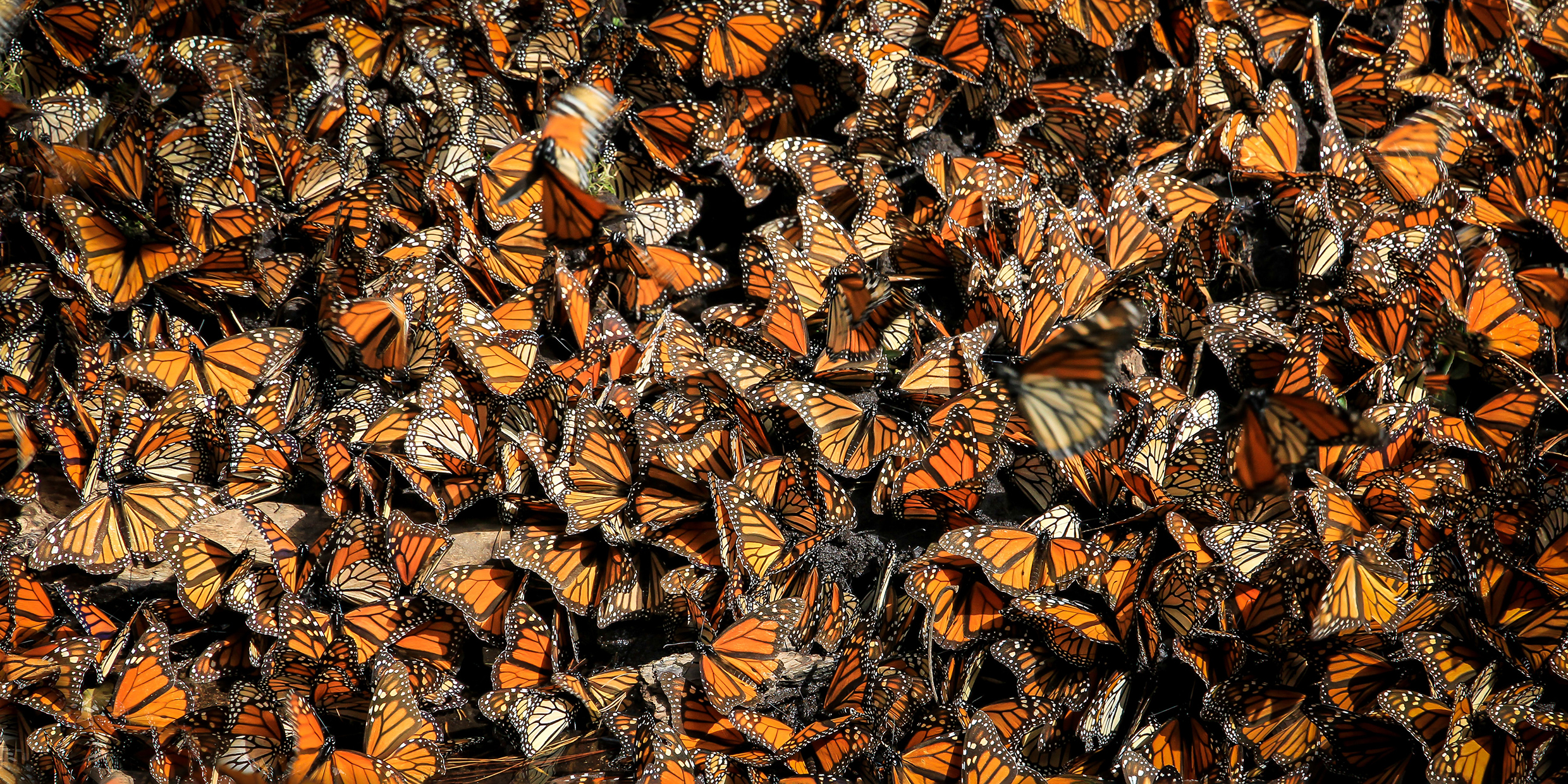Originally published 14 March 2000
CHINCUA, MEXICO — Getting here wasn’t easy: A six-hour drive from Mexico City over sometimes terrifying mountain roads, with an overnight stay along the way in Zitácuaro; a mile-long climb by foot along a rugged trail deep in volcanic dust to 10,500 feet, then a drop into a canyon forested with fir trees.
We had seen a hint of what we were looking for. As we passed through the mountain village of Angangueo, hundreds of bright orange monarch butterflies danced in the air, casting fluttering shadows on walls, faces, pavement. The villagers went about their business as if these angelic presences were the most normal thing in the world.
But nothing could have prepared us for what we saw when we finally got to the tiny patch of forest where 20 million monarchs covered the trees more thickly than leaves. When occasionally a flood of sunlight poured through the forest canopy, the butterflies took flight in billowing clouds. If you listened carefully, you could hear the soft rush of their wings.
As I watched, wide-eyed and dropped-jawed, it occurred to me that among this teeming mass of monarchs may be some I watched flit last fall in New England’s milkweed meadows.
Adult monarchs from all over eastern North America gather each winter in a few clumps of trees in this part of central Mexico in what is one of the epic migrations of the animal kingdom.
It begins in late September, or early October. A chill in the air. A waning sun. Monarchs as far north as Canada hear a voice, speaking a language whose words are chemical, compelling, irresistible: “Take wing. Follow me. Down along the spine of the Appalachians, across the flat crop lands of the Gulf Coast, into the mountains of Mexico.”
How do they do it? How does a butterfly that has never made the journey before know when to depart and where to go — this tiny pinch of flesh with bright postage-stamp wings and mustard-seed brain?
This much seems certain. The call, the map, the skills for navigation were there in the egg, somehow encoded in the monarch’s DNA. Not, of course, in the way maps and directions are stored in the memory of an automobile or airplane’s navigation system. It is far more subtle than that. What the DNA encodes are proteins. And the proteins make up a language of geometry that speaks through the monarch’s nervous system. “Ven, sigueme. (Come, follow me.)”
No one knows how the language evolved, nor does anyone yet understand the vocabulary or syntax. A butterfly’s DNA is more voluminous than our own, 40 times more voluminous. Most of the butterfly’s DNA is probably junk — long strands of useless garble. Other parts code for the successive body designs of an insect that goes through metamorphosis. Somewhere in that encyclopedia of information is the invitation to a journey whose origin is lost in the depths of time.
Someday the miracle of the monarch’s astonishing migration will be unraveled — if only the monarch survives long enough for its secret to be exposed.
Its survival, of course, is in jeopardy. These patches of Mexican forest are threatened by logging. Only a few sanctuaries are “protected,” and these are dogged by conspiracies of greedy landowners and corrupt politicians. If logging continues at the present rate, monarch expert Lincoln Brower estimates that the butterflies will be gone in 20 years.
The threatened winter roosts are the key to the monarch’s survival — what Brower calls the insect’s “Achilles heel.” But North Americans also persecute monarchs. The noxious chemicals we put into the air and earth don’t help. Our milkweed meadows are giving way to suburban housing and commercial “parks.” That we might willfully help delete from the universe so wondrous a thing as these Mexican snowstorms of butterflies is a possibility too sad to be reckoned.
In The Magic Mountain, the novelist Thomas Mann defines life this way: “It was a secret and ardent stirring in the frozen chastity of the universal; it was a stolen and voluptuous impurity of sucking and secreting; an exhalation of carbonic gas and material impurities of mysterious origin and composition.” Yes, gushy, over-the-top prose. But why not? What we saw in the mountains of Mexico was gushy and over-the-top. What could be more over-the-top than those clouds of colorful flyers, pumpkin, salmon, and flame, stirring the air with their angelic wings.
At the end of March, the monarchs will leave these few patches of forest and head north, breeding and feeding along the way. Descendants of some of these butterflies will arrive in New England in late spring and early summer to grace our meadows with their beauty.
Adios, amigos. Buen viaje. Safe journey. May your tribe survive forever.



